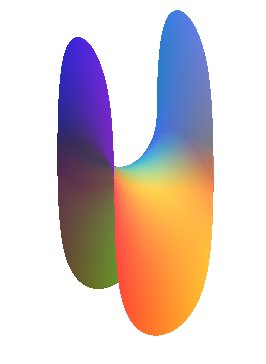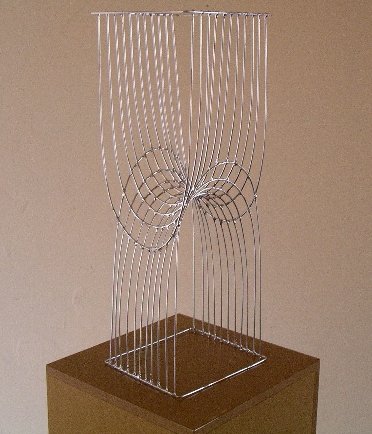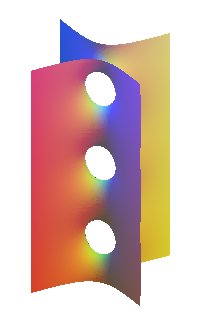First Scherk surface


| next surface | previous surface | 2D curves | 3D curves | surfaces | fractals | polyhedra |
SCHERK SURFACES
| Surfaces studied by Scherk in 1834.
Heinrich Ferdinand Scherk (1798-1885): German mathematician. The minimal helicoids are also sometimes called Scherk surfaces. |
First Scherk surface


| Cartesian equation: Equivalent form: Included lines: Weierstrass parametrization: |
The first Scherk surface is the only minimal surface that is a translation surface. It is obtained by translation of the curve of the log cosine (which is also the catenary of equal strength) along itself.


 |

View made with Povray by Alain Esculier |

picture by Jean-Marie Dendoncker. |
Compare to the Enneper surface, another minimal surface.
Second Scherk surface


| Cartesian equation: Simply periodic minimal surface. |
Engraving of the first Scherk surface, by Patrice Jeener, with his kind authorization.
| next surface | previous surface | 2D curves | 3D curves | surfaces | fractals | polyhedra |
© Robert FERRÉOL 2017